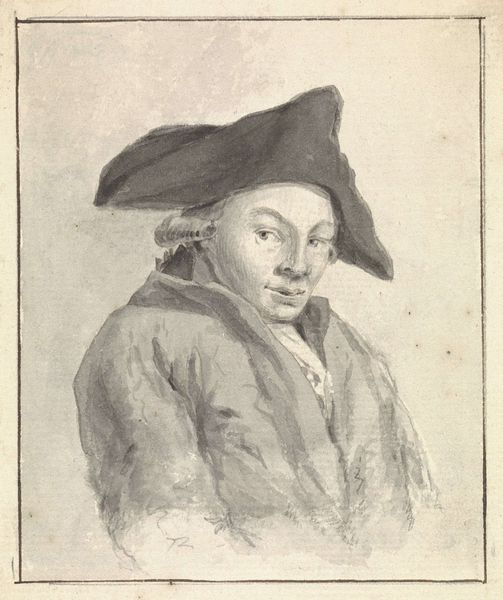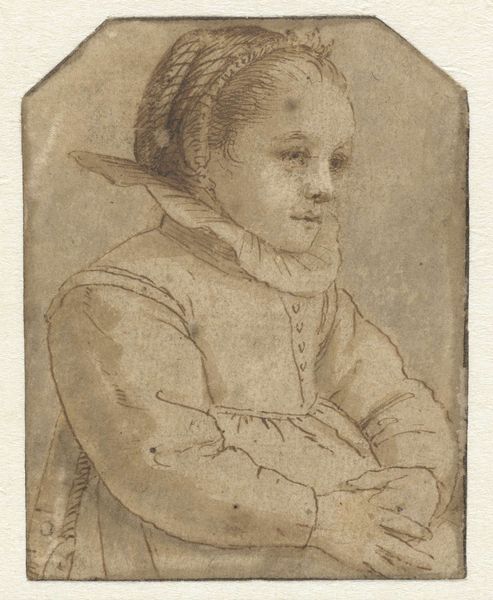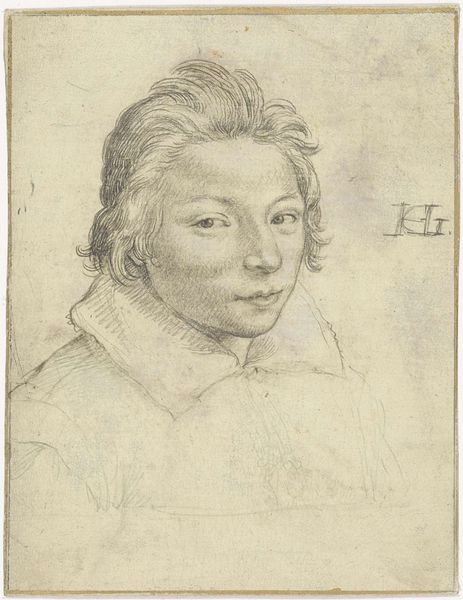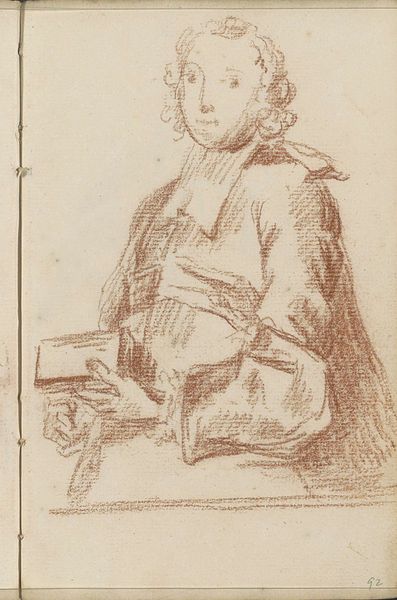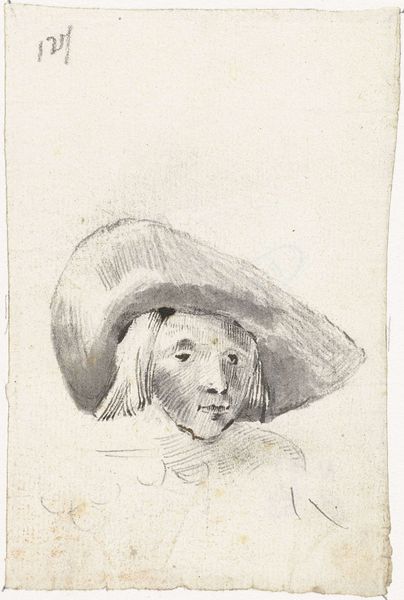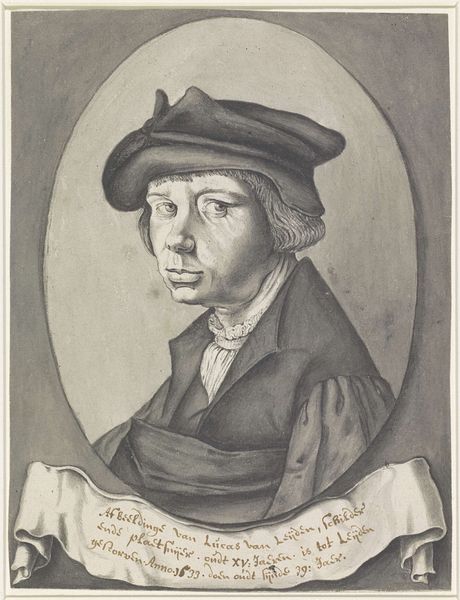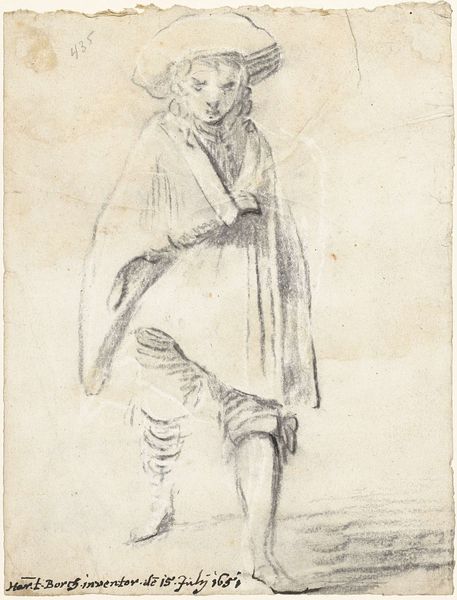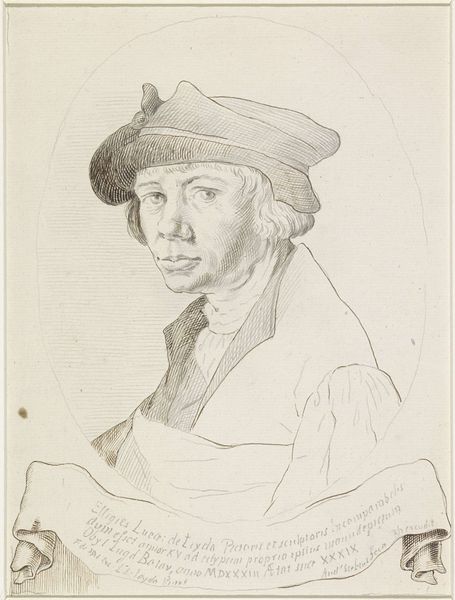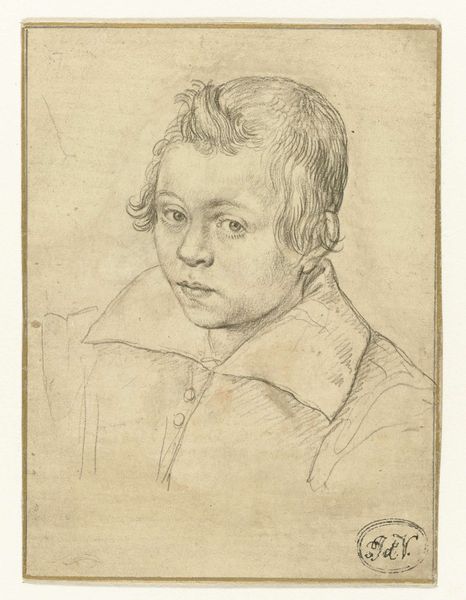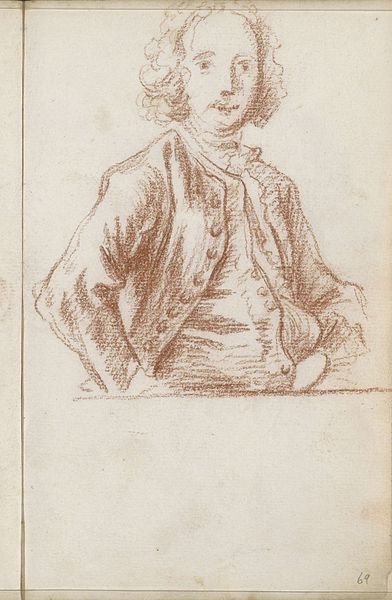
drawing, pencil, charcoal
#
portrait
#
pencil drawn
#
drawing
#
charcoal drawing
#
pencil drawing
#
pencil
#
charcoal
#
academic-art
#
realism
Dimensions: height 237 mm, width 193 mm
Copyright: Rijks Museum: Open Domain
Jan Evert Grave made this self-portrait using graphite and chalk on paper. Although the materials are modest, the artist's skills shine through. Look closely, and you'll see the subtle gradations of tone he achieved, giving depth to the face and folds of his clothing. The laid paper provides a soft texture, contrasting with the crispness of the white chalk highlights. In the late 18th century, portraits were luxury items. While oil paint was deemed suitable for the wealthy, drawings became a cost-effective way to capture someone's likeness. This approach democratized art production, which was a shift. Drawing became a stepping stone in the mass production of images through prints and engravings. These techniques enabled the dissemination of art beyond the elite circles, shaping visual culture, and fostering broader engagement with artistic expression. The use of seemingly humble materials reflects how artists sought new modes of production. It reminds us that artistic value lies not only in the final product, but in the ingenuity and skill invested in the making.
Comments
No comments
Be the first to comment and join the conversation on the ultimate creative platform.
